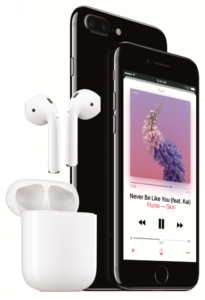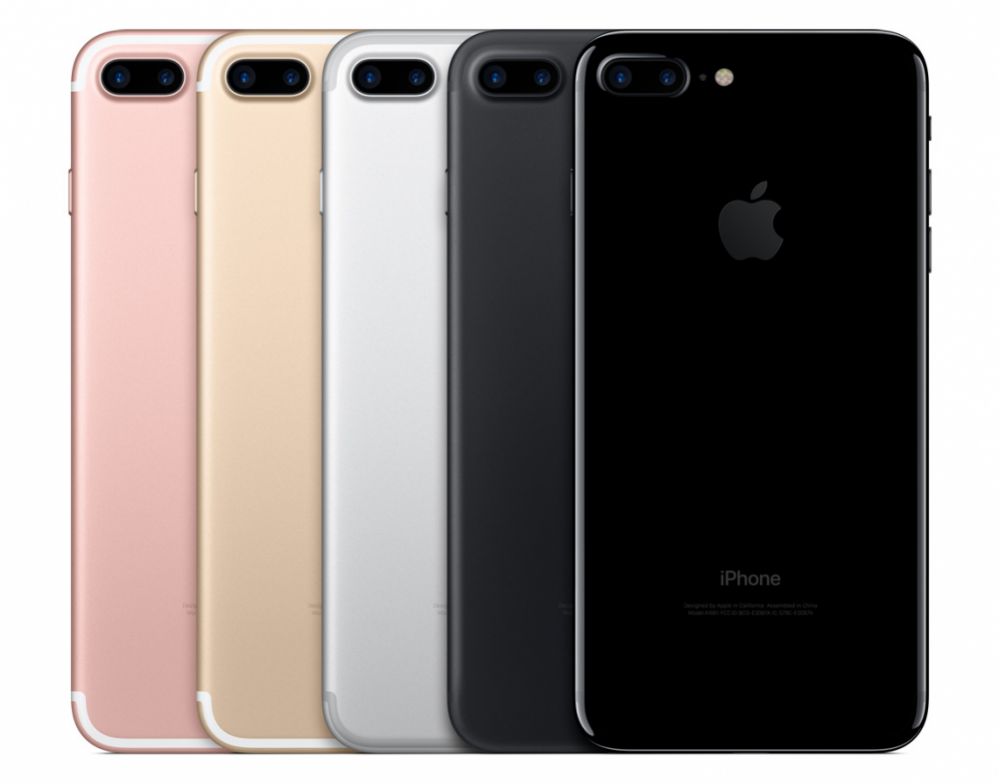Apple announced its latest products, the iPhone 7 and the iPhone 7 Plus, to much fanfare on Sept.
The new upgrades are mostly internal, but there’s one serious external change. There’s no headphone jack.
Instead, when you buy an iPhone 7, Apple includes headphones that plug into the Lightning port, which is also used to charge the phone.

So, there’s one huge problem for most users: it’s no longer possible to charge the phone and listen to music at the same time. Stripping a product of a port that every model before it has had is user-hostile and bound to cause complaint.
Even without a headphone jack, there are still a few possible methods for iPhone 7 owners to listen to music. If people want to use an older pair of headphones, they can plug into an adapter included with the iPhone 7. The adapter plugs into the Lightning port on one end and turns into a headphone jack on the other.
The included Apple headphones that plug directly into the Lightning port are another option. There are other Lightning headphones on the market as well.
But neither of those options solves the charging issue.
What if you want to go on a long road trip? That’ll require some tunes to keep you awake and a charger to keep your iPhone 7 alive. Unless you use Bluetooth, you’ll need to make a decision: battery or music.
Apple says the future is wireless and they’re right. The only problem is that we’re stuck in the present.
Bluetooth has been around for years, of course, but now Apple is pushing us to use it as our primary means of listening.
A perfect example of this are the new, wireless $160 AirPods that it recently introduced. They’re fancy. They’re futuristic. And they’re prone to get lost.
Apple’s stance is that it’s high time for Bluetooth to improve.
Whenever an industry leader like Apple makes such a change, it places a responsibility on others to react. You can expect to see the prices of Bluetooth headphones drop and the quality to rise as companies compete for the new iPhone 7 demographic.
Apple says the future is wireless and they’re right. The only problem is that we’re stuck in the present.
Bluetooth used to be the more luxurious option. Now, Apple, being the luxury brand that it is, has made Bluetooth one of the only feasible choices.
In July, a study by The NPD Group found that Bluetooth headphones outsold wired headphones for the first time ever between January and June.
Did Apple know that before it decided to nix the jack? Probably not, but the statistic certainly works in the company’s favor.
To suggest that the Bluetooth standard is a universal cure to all of our problems would be inaccurate. The technology has its pros and cons, but that’s exactly the point. Bluetooth headphones are another battery that you have to worry about and the sound quality isn’t as good as wired headphones.
The headphone jack is the definition of old tech, though. It’s been used as far back as the the early 1900’s. That’s right. That technology standard is even older than your grandparents.
As for Apple’s reason for removing it, the company claims that the jack took up too much space inside of the iPhone. Thanks to the removal, the iPhone 7 now has a slightly larger battery and is waterproof.
This isn’t the first time that Apple has been criticized for urging the industry along. In the late 90’s it killed off the 3.5” floppy disk drive and, in recent times, has stopped shipping laptops with CD drives.
The forceful switch to Bluetooth will be painful for most users, but the transition should happen sooner than one might think. In the meantime, you can chalk up to growing pains.



